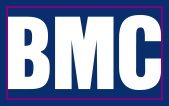Worldwide Hybrid Train Industry to 2027 - Key Acquisitions & Mergers - ResearchAndMarkets.com
The "Hybrid Train - Global Market Outlook (2019-2027)" report has been added to ResearchAndMarkets.com's offering.
The Global Hybrid Train market accounted for $39,603.6 million in 2019 and is expected to reach $73,249.26 million by 2027 growing at a CAGR of 8.0% during the forecast period.
Growing demand for energy-efficient transport system and rising demand for comfort and safety are the major factors driving market growth. However, capital-intensive nature of trains is restraining market growth.
A hybrid train is an engine that uses an on-board rechargeable energy storage system (RESS), that is set up in the middle of the source to provide power and the electric system of the train that is interconnected to the wheels. They are environmental friendly, emission free and effective.
Based on propulsion, the electro diesel segment is likely to have a huge demand as these railway vehicles are used across all the regions of the globe as they may replace their diesel counterparts. These train sets have been successfully generating savings in operation and maintenance costs. By geography, Asia Pacific is going to have a lucrative growth during the forecast period due to increasing demand for ecofriendly trains to reduce pollution and the rising demand for energy efficient trains that use alternative fuel. Moreover, China's rapidly growing economy is driving the expansion of the market to improve the transport systems in the country and make them more ecofriendly.
Companies Mentioned
- CRRC
- Alstom
- Ballard
- BNSF
- Bombardier
- Construcciones Y Auxiliar De Ferrocarriles (CAF)
- Cummins
- General Electric
- Hitachi
- Hyundai Rotem
- Kawasaki Heavy Industries
- Siemens
- Toshiba
- Toyota
What the report offers:
- Market share assessments for the regional and country-level segments
- Strategic recommendations for the new entrants
- Covers Market data for the years 2018, 2019, 2020, 2024 and 2027
- Market Trends (Drivers, Constraints, Opportunities, Threats, Challenges, Investment Opportunities and recommendations)
- Strategic analysis: Drivers and Constraints, Product/Technology Analysis, Porter's five forces analysis, SWOT analysis, etc.
- Strategic recommendations in key business segments based on the market estimations
- Competitive landscaping mapping the key common trends
- Company Profiling with detailed strategies, financials and recent developments
- Supply chain trends mapping the latest technological advancements
Key Topics Covered:
1 Executive Summary
2 Preface
2.1 Abstract
2.2 Stake Holders
2.3 Research Scope
2.4 Research Methodology
2.4.1 Data Mining
2.4.2 Data Analysis
2.4.3 Data Validation
2.4.4 Research Approach
2.5 Research Sources
2.5.1 Primary Research Sources
2.5.2 Secondary Research Sources
2.5.3 Assumptions
3 Market Trend Analysis
3.1 Introduction
3.2 Drivers
3.3 Restraints
3.4 Opportunities
3.5 Threats
3.6 Application Analysis
3.7 Emerging Markets
3.8 Impact of Covid-19
4 Porters Five Force Analysis
4.1 Bargaining power of suppliers
4.2 Bargaining power of buyers
4.3 Threat of substitutes
4.4 Threat of new entrants
4.5 Competitive rivalry
5 Global Hybrid Train Market, By Operating Speed
5.1 Introduction
5.2 Below 100 Km/H
5.3 100-200 Km/H
5.4 Above 200 Km/H
6 Global Hybrid Train Market, By Propulsion
6.1 Introduction
6.2 Battery Operated
6.3 Electro Diesel
6.4 Hydrogen Powered
6.5 Liquefied Natural Gas (LNG)
6.6 Other Propulsion Types
6.6.1 Gas Powered
6.6.2 Solar Powered
7 Global Hybrid Train Market, By Application
7.1 Introduction
7.2 Compressed Natural Gas (CNG)
7.3 Passenger
8 Global Hybrid Train Market, By Geography
8.1 Introduction
8.2 North America
8.2.1 US
8.2.2 Canada
8.2.3 Mexico
8.3 Europe
8.3.1 Germany
8.3.2 UK
8.3.3 Italy
8.3.4 France
8.3.5 Spain
8.3.6 Rest of Europe
8.4 Asia Pacific
8.4.1 Japan
8.4.2 China
8.4.3 India
8.4.4 Australia
8.4.5 New Zealand
8.4.6 South Korea
8.4.7 Rest of Asia Pacific
8.5 South America
8.5.1 Argentina
8.5.2 Brazil
8.5.3 Chile
8.5.4 Rest of South America
8.6 Middle East & Africa
8.6.1 Saudi Arabia
8.6.2 UAE
8.6.3 Qatar
8.6.4 South Africa
8.6.5 Rest of Middle East & Africa
9 Key Developments
9.1 Agreements, Partnerships, Collaborations and Joint Ventures
9.2 Acquisitions & Mergers
9.3 New Product Launch
9.4 Expansions
9.5 Other Key Strategies
10 Company Profiling
For more information about this report visit https://www.researchandmarkets.com/r/rxarye
View source version on businesswire.com: https://www.businesswire.com/news/home/20200804005543/en/





